The Article
Black Star Cables from Studio Connections
25th January 2018
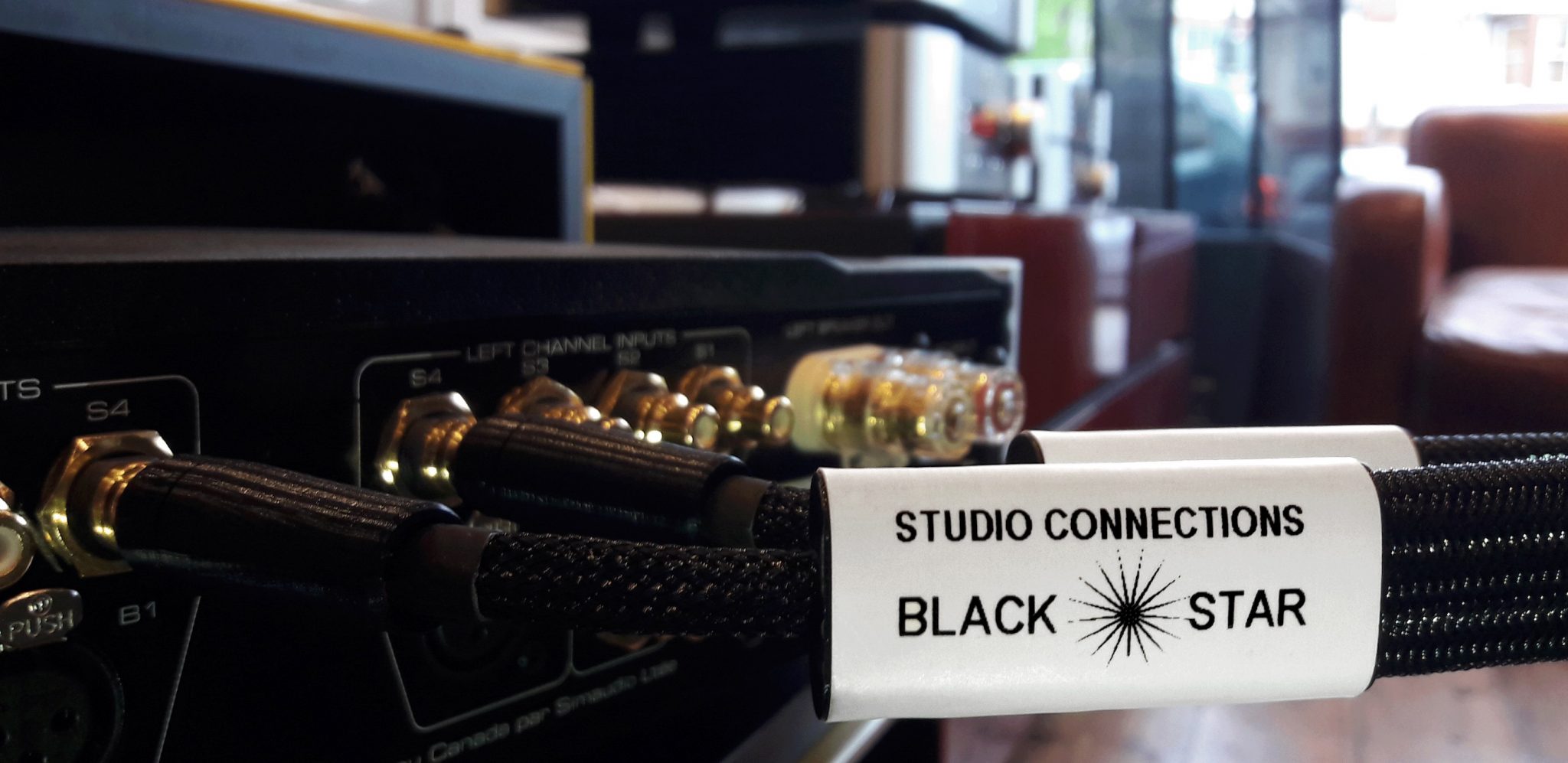
Providing a suite of high end cables, Paul Rigby delves deep into the Studio Connections cupboard and reviews Black Star mains cables, interconnects and speaker cables as a connected system
There’s cables, there’s high-end cables and there’s Studio Connections. Run by Michael Whiteside, a man who built three of the main studios at Abbey Road (so he knows a thing or two about hi-fi and cables especially), the recording facilities at King’s College in Cambridge and headed up technical services for Harman International Industries and TEAC in the UK, Studio Connections manages to produce advanced cable technology without taking up too much physical space or becoming too ridged in the process, an important part of the design.
Black Star is the company’s most recent cable design and has already found a place in home set-ups, live theatre rigs and recording studio installations.
So what’s so special about the Black Star cables? Whiteside points at the ground, so to speak, “The resolution of a device is limited by the quality of its reference voltage or ground. In a system a component ground is linked to, and so combined with, all the other grounds. Without management resonances, earth loops, reflections and impedance mis-matches superimposes disturbances into the system common ground and this fogs the individual component resolution.”
According to the company, Black Star is designed so that each cable type contributes its part, according to its function, towards a resonance and low-noise ‘whole system’ grounding scheme, “So when Black Star is used throughout, all the individual components have a super-stable platform to be able to ‘sing as one’ with peak resolution,” said Whiteside, which, “…stops both cable and system infrastructure ‘getting in the way’ and so is the closest you can get to enabling equipment to reproduce audio as a true representation of the original signal.”
Speaking to Whiteside further I realised that the guy has spent a long time considering the technicalities of cable design. That is, he has spent a lot of time researching musical timing, “A key discovery was that, as our brains are hardwired to process natural sounds, if sound is not replayed with timing that precisely mimics its native form, then the brain requires additional ‘interpretation time’ to understand the sound source’s location,” said Whiteside, “We call this the ‘Whiteside-Simpson Effect’. The time delay in the brain is around 4ms. About the time for sound to travel 1m in air.”
Whiteside believes that resonance and interference created in a hi-fi system alters the native audio sound, forcing the brain to interpret the sound for directionality, separation and intelligibility which means that the brain is unable to perceive the sound as ‘real’, “It is within a cable system that most resonance and interference is caused, accentuated or controlled and so cabling greatly influences the sense of ‘actuality’ of reproduced sound. Just as a telescope requires a firm base, sturdy form and vibration free frame to get the deepest resolution from its optics, audio components require a cable system formed around them that nulls resonance, vibration and noise in the system so as to maintain the highest resolution; so much so, that we recommend starting a system with the cable design even before purchasing components.”
In designing Black Star, Whiteside targeted the causes of system disturbances and then combined dielectrics, conductors and damping elements to null the effects, “This makes Black Star an ideal ‘cable environment’, providing the electrical foundation, form and framework in which components play audio closer to the native sound.”
SOUND QUALITY
The Studio Connections philosophy talks about a system-wide problem. Hence, I decided to build the cable structure or loom on a step-by-step basis to see how my system was affected and changed with each cable addition and change.
To begin, I decided to look at how my current system set-up interacted with…out there. So that meant, for now, my vinyl chain of turntable, phono amplifier, pre-amp, monoblock amplifiers and powered electrostatic speakers. I wanted to see how that entire unit handled the outside world. By the outside world, I mean plugging the entire thing to the mains. If the mains could be stabilised and controlled to enhance the sonic environment then any internal changes (i.e. interconnects and speaker cables) would experience a greater and more direct change and, hopefully, improvement.
Taking each Black Star power cable, I decided to move from the source downwards. From the phono amp to the pre, then monoblocks and, finally, speakers. So, what happened?
I decided to use Connie Francis’ original pressing Sings Bacharach and David (MGM) from 1968 in which she fronts a large orchestra. Part of the reason for selecting it is because it’s an ‘ok’ mastering and pressing. Nothing special. Not bad, mind you, but not astounding. Hence, any cable loom will need to work its socks off to impress me.
I inserted a single cable into the phono amplifier, a 2-box Icon Audio PS3 Mk.II
It sounds fanciful to expect any real sonic change by changing a single power cable but that’s what happened here. Now, there is a slight wrinkle here because, firstly, this is a phono amplifier. A device designed to amplify tiny cartridge signals. Hence, amplified music is often accompanied by amplified noise. Hence, the phono amplifier is a hub for harmful noise and, therefore, and changes in this area are, well, amplified.
The cable change here enhanced clarity. Simple as that. That is Francis’ delivery was clearer, easier both on my ear but also she seemed to be having a easier time of it too. Her voice flowed without too much effort. The bass frequencies from the bowed cellos provided a greater organic presentation while the piano fairly tinkled and bounced and the introductory trumpet introduction exhibited enhanced reverb tails, adding to the space in the soundstage.
Next? The power cable on the pre-amp. To be frank, I wasn’t expecting much here. The phono amplifier played with tiny cartridge signals, the power amps hold whopping great transformers, the electrostatics are so sensitive…the pre seemed almost an afterthought. I was completely wrong in that assumption. What I heard was the next rung up the ladder. A smoother and more even-handed midrange with Francis’ voice becoming more…feminine. Gentle. Kinder. Piano seemed to grow in size as well as stature while the bass from the cellos also fattened and became more of a foundation.
Next up were the monoblock power amps. I wasn’t sure what was going to happen here. Large transformers…big 845 valves. What I got wasn’t a ‘betwen the eyes, wham, bam’ kinda thing. Instead, the sound, how can I put this, started to grow up. In fact, there is a literal comparison to be made here. Do you have children? Older children? I have an 18 year old. The difference between my son at 14 and 18 is not amazing in obvious ways. He’s not really any taller or features enhanced intelligence but he is maturing. Filling out. His speech is now complex and considered. Oddly, that’s how the cables now began to sound. Although, on this occasion, some actual growing did occur. The stereo image lifted upward by 6-8 inches. Midrange had an authority and confidence, treble had a deeper control and bass provided real heft and solidity. One point of note was the Francis vocal during crescendos. At this point, the slight hardening had gone. Francis just offered power instead of a slight stridency.
What would the electrostatic speakers do? This would ‘close off’ my system in a Studio Connections bubble, in effect. That is, the only way my hi-fi would be able to talk to the mains would be via Studio Connections cables.
Actually, the speaker hook-up was a bit of an anti-climax. The improvements were there, a cleansing of the midrange primarily with a further reduction of noise but, to be honest, the effect was as subtle one. That said, with my hi-fi chain now cordoned off, as it where, into Studio Connection territory, the hi-fi chain produced a low noise, open, clean and clear presentation. The soundstage had been reorganised, the sound was now richer and multi-layered in terms of the amount of detail that was coming through while all frequencies showed improvement. The sound was now confident but also comfortable, making music production sound oh so easy.
To be honest, I could have stopped there and just enjoyed he music pouring from my system. I could have been quite content to stop right at the power cables. But there was more to come, of course. I turned to the speaker cables and played Joe Williams’ Me and the Blues (Speakers Corner) and the track, I’m Sticking with you, Baby.
The inclusion of the Black Star speaker cables added an array of expected additions to the sound stage. Hence, the bottom end was now tighter and precise. In this case, that frequency was represented by a double bass. Thus, each plucked string was evident as a string instead of the foggy, amorphous tone that is was before. The strings had character and the bass became a firm foundation for the overall track.
Williams’ voice was interesting now too. The focus and precision affected here too. So, when Williams really attacked a line or a word you could hear him slightly straining to hit a crescendo. This aspect added an element of emotion that was previously absent, giving the track greater urgency.
What really surprised me, though was the larger degree of detail ‘inside’ instruments. I’d heard the cymbal bring hit before, I’d also heard the reverb afterwards but it was the bit in the middle that was new here. The new speaker cables infused this area with more information, greater complexity and, hence, an enhanced tonal reality.
Adding the Black Star interconnects and playing ELO’s Mr Blue Sky from Out of the Blue, the phono amp to the pre-amp and the pre-amp to my monoblocks did two things. Firstly, it lowered noise so much, I needed to up the gain significantly to achieve the same volume. Secondly, both the voice and instruments added further tonal realism and character.
Hence, Williams’ voice provided a greater degree of personality and identity. At times, it was almost as if he was confiding in you, as part of a private conversation, with all of the shading that is associated with that along with gradation in terms of vocal emphasis that gave the vocal performance refinement and finesse.
There were two additional points to be made after the interconnects were added. The first was the emergence of an imperceptible ringing noise. One that could be felt and not actually heard but one that was most definitely wearing on the brain and was uncomfortable to the ear. I initially wondered if this might the cables at fault. Not so. After much experimentation, this noise was traced to my very expensive Transfiguration Proteus cartridge. This is intriguing. I have seen some hi-fi related measuring kit accuse the Proteus of being slightly harsh in the treble. To be honest? I’ve never heard this effect (which is one reason why I dislike measurements in hi-fi reviews, folks) and I still disagree with the measuring, even now. Obviously, what was being seen was this very high frequency ringing. Never heard by my ears until now, after installing the Black Star cables. I changed the cartridge to a Koetsu Black (Black was obviously the colour to go for, eh?) and the ringing disappeared.
Secondly, if you have a valve system, you will need to tell Studio Connections. Its cable technology treats solid state and valves in totally different ways, adding impedance to solid state in such a way to improve sound quality (It’s a long story – but I can give you more information if you need it. You can contact me directly.) but it removes this technique for valves. If it did not, the volume would disappear to zero in double quick time. So, don’t forget to discuss your current set-up in detail before you buy.
CONCLUSION
The one additional note of caution that I will add to the praise noted above is this. Don’t think about installing these cables if you have any noise in your system. If you do, these cables will find it and present that noise to you just as well as the music. These cables are not intelligent, they can’t tell the difference between the music you want to hear and the rubbish you do not. They transfer everything superbly. Even the noise will be of audiophile quality. Hence, it’s up to you to remove noise from the mains (if you are in an urban situation, especially), vibrational noise from shelving, mechanical noise from other components, Wi-Fi upper midrange ringing (I suffered from this at the beginning of this review and had to remove it before I could continue with this test) and the rest. You should be doing this anyway but most people either don’t bother, don’t have the budget to completely process a hi-fi in this way or are not methodical and miss important areas. These cables force you to do a proper de-noising job on your hi-fi.
Once you have down that, the remainder will be the stuff you call music. If you don’t do this, these cables will give you a head-ache. And it won’t be the cables fault, either.
These cables are for serious and meticulous hi-fi users only.
Hence, these cables are a bit like a Formula 1 car. Treat them roughly and without due care and attention and they’ll make your life hell. Prepare them correctly and run them properly and they’ll reward you with a performance like you’ve never heard.
In a properly prepared hi-fi, though, the cables offer no stress, no apparent effort to project the music at you and no forcing in any way. All frequencies flowed naturally without competition and without any sense of noise within to alter or skew the final sound.
Sound Connections cables offer advanced technology in a simple cable chassis that is easy to use. There’s no extra hardware boxes or gizmos added to the cable length here and no massive cable girths that make you think that you’re lugging around an elephant’s trunk. What these cables give you is an articulate, lucid and, above all, well structured sonic presentation. I now understand why Abbey Road used Michael Whiteside to build their studios.
STUDIO CONNECTIONS BLACK STAR CABLES
Tel: 0131 516 7561 (ask for John Carroll)
Email: [email protected]
Prices:
Interconnects Single Ended RCA Stereo Pair
SC-BXS-XLR-1M0 SC-BXS-RCA-1M0, £2,400
Speaker Cables 4mm Banana Connectors Stereo Pair
SC-BXL-BAN-3M0, £4,200
Mains Cables 13Amp to IEC
SC-BXP-UK-IEC-1M0, £1,200
GOOD: low noise, clarity, coherent soundstage, midrange insight, tonal accuracy, mature sonics
BAD: a carefully prepared hi-fi system is essential
RATING: 8
REFERENCE SYSTEM
Origin Live Sovereign turntable
Origin Live Enterprise 12″ arm
Transfiguration Proteus cartridge
Koetsu Black cartridge
Icon PS3 phono amplifier
Aesthetix Calypso pre-amp
Icon Audio MB845 Mk.II monoblock amplifiers
Quad ESL-57 speakers with One Thing upgrade
Vertex AQ & Tellurium Q cable
Blue Horizon Professional Rack System
Harmonic Resolution Systems Noise Reduction Components
All vinyl was cleaned using an Audio Desk’s Ultrasonic Pro Vinyl Cleaner

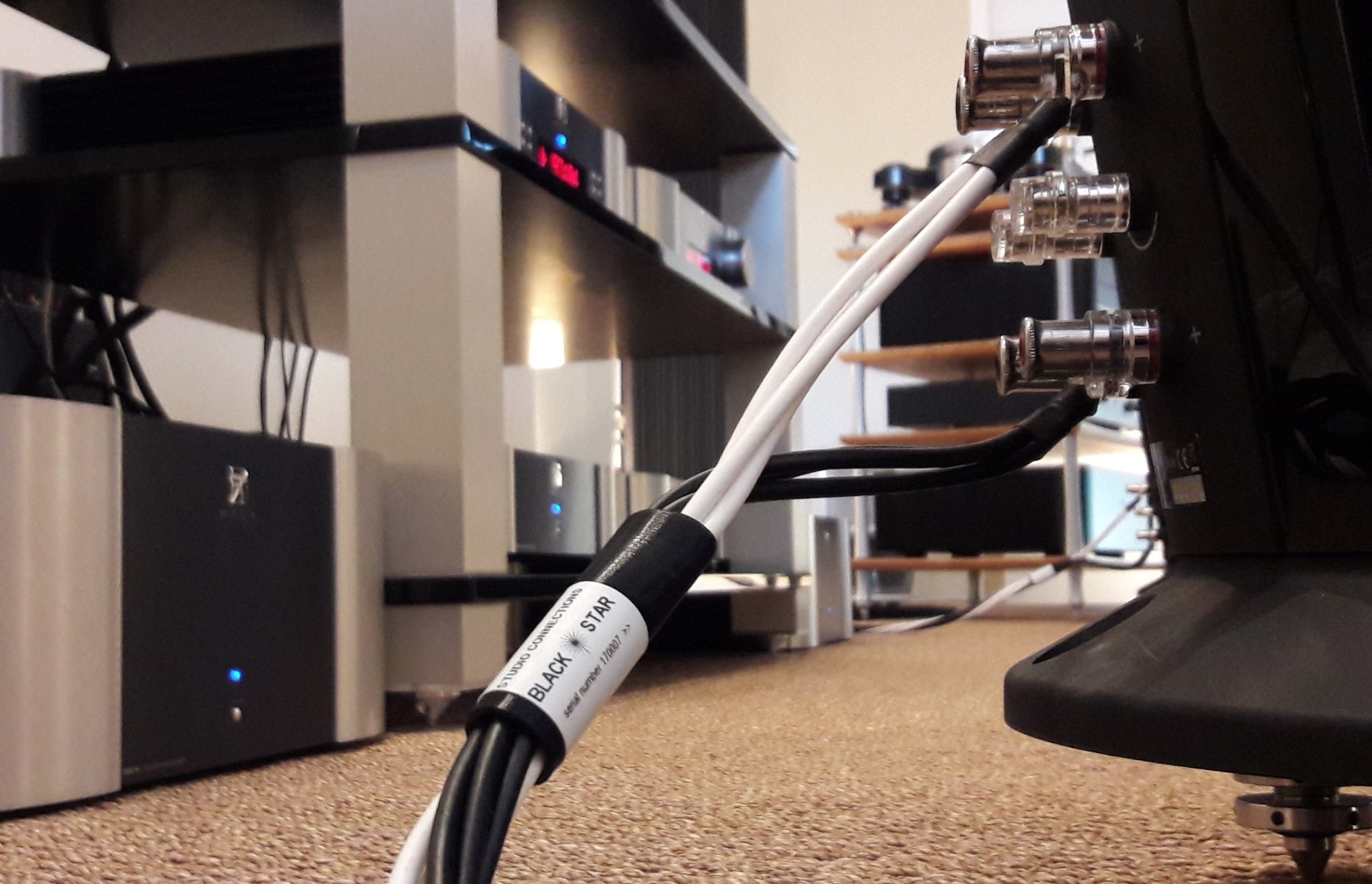
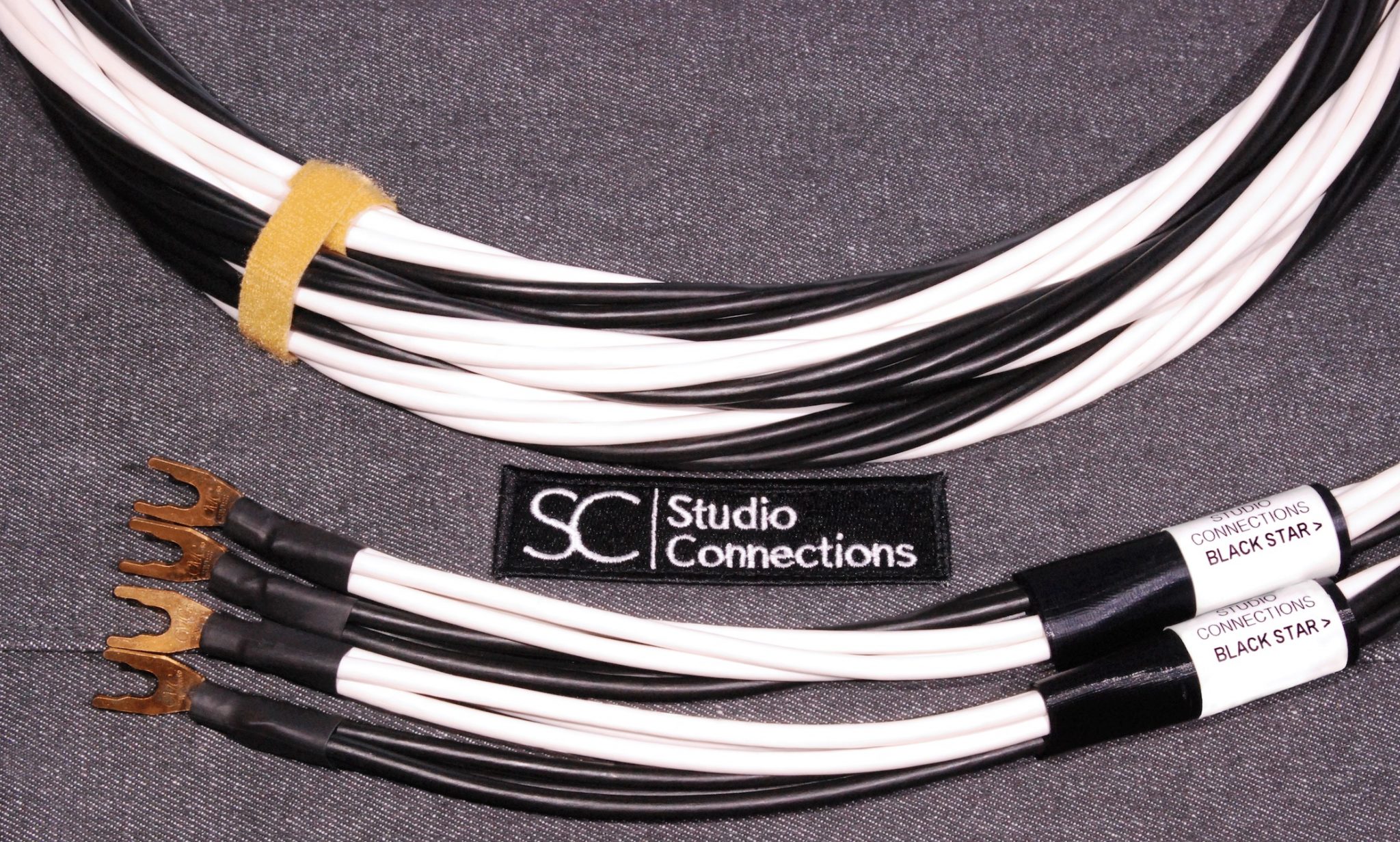

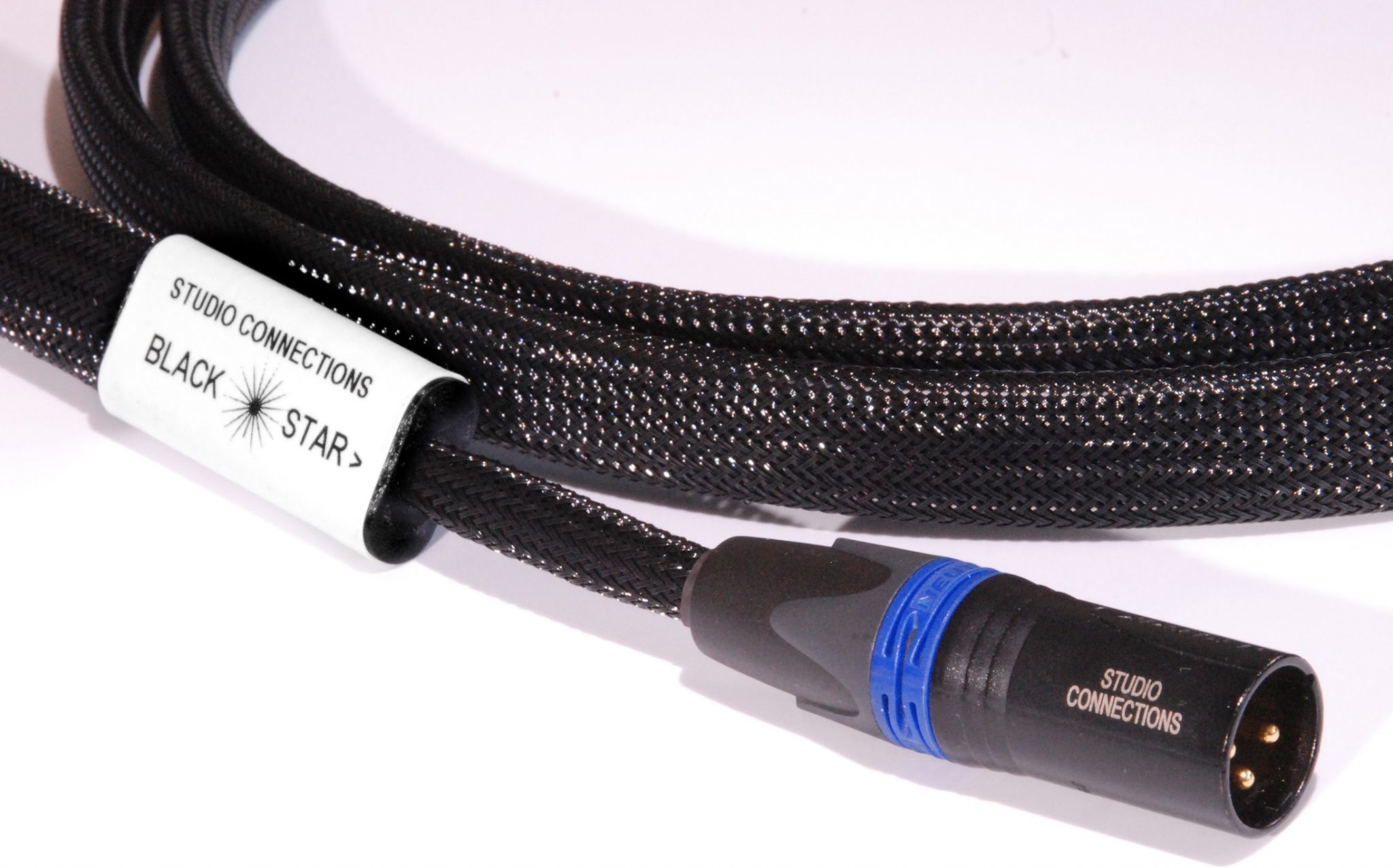
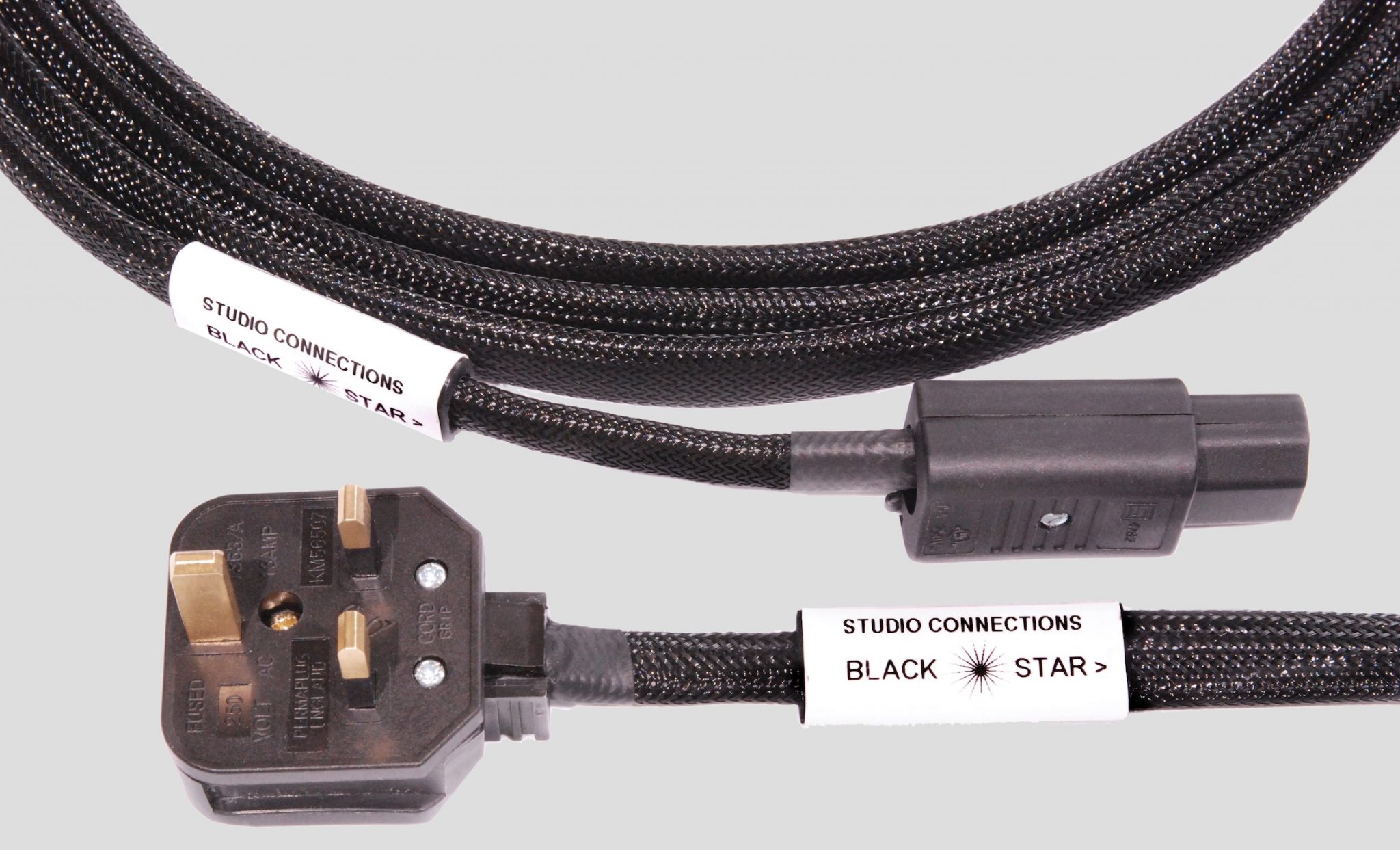
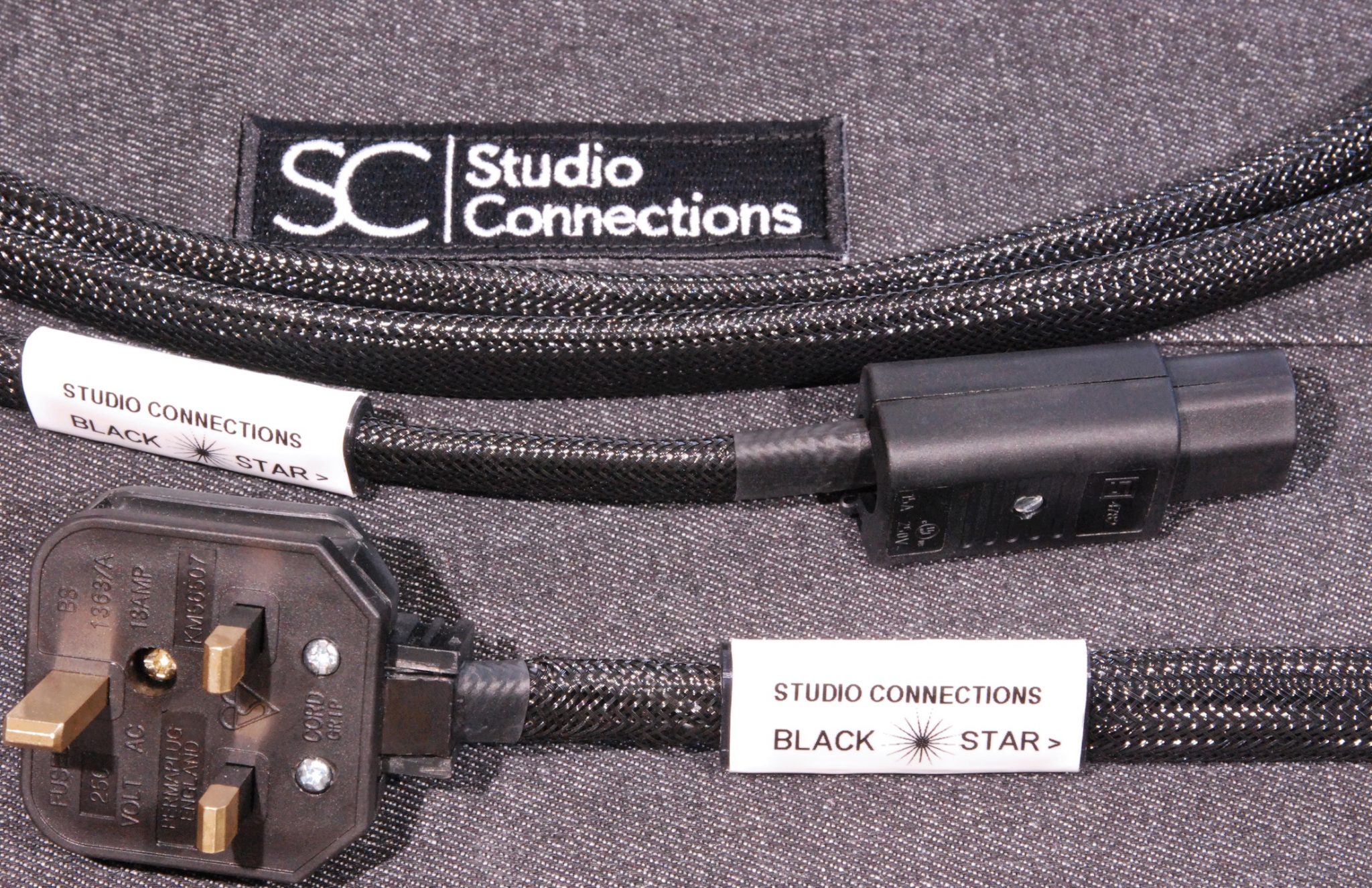
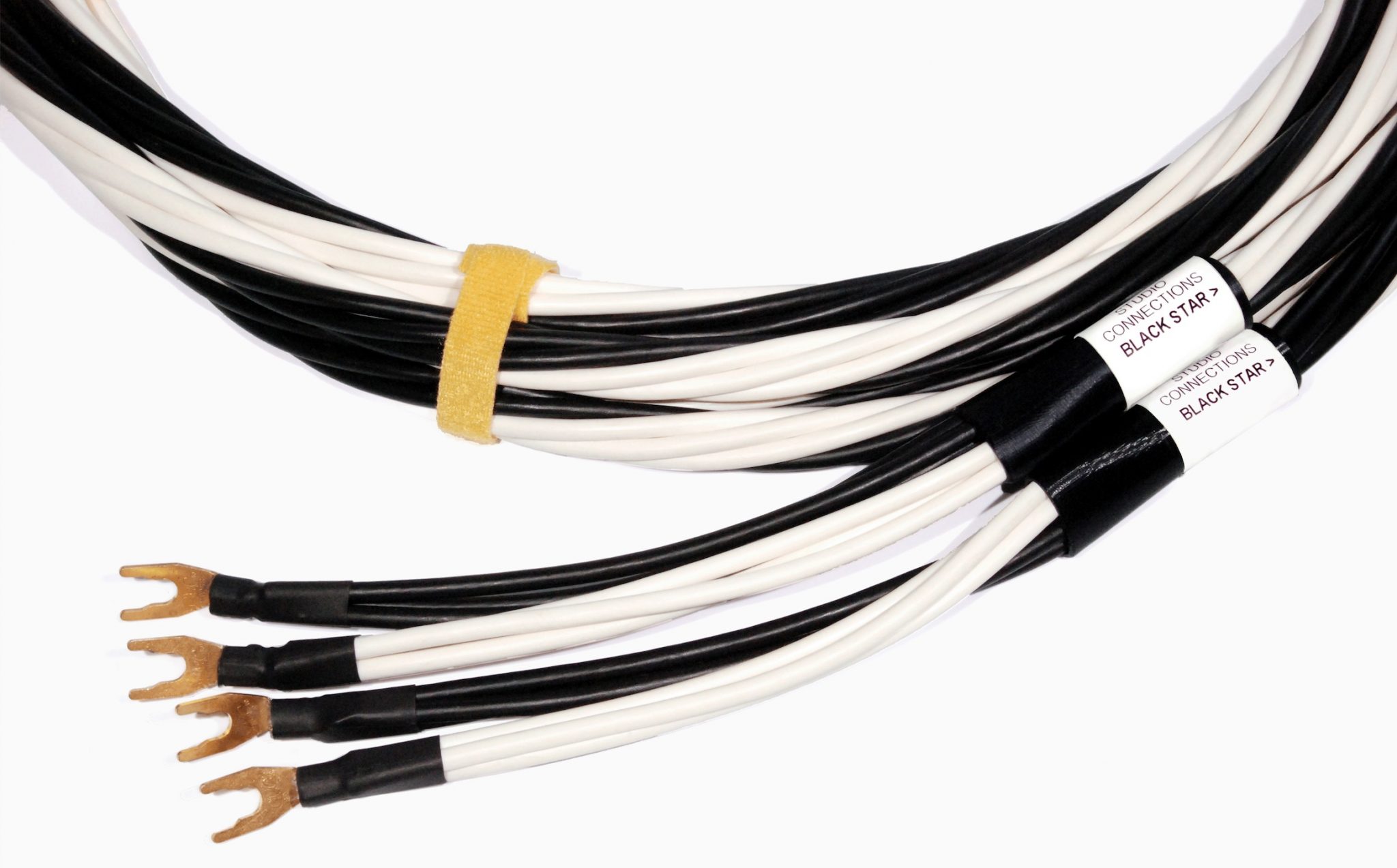
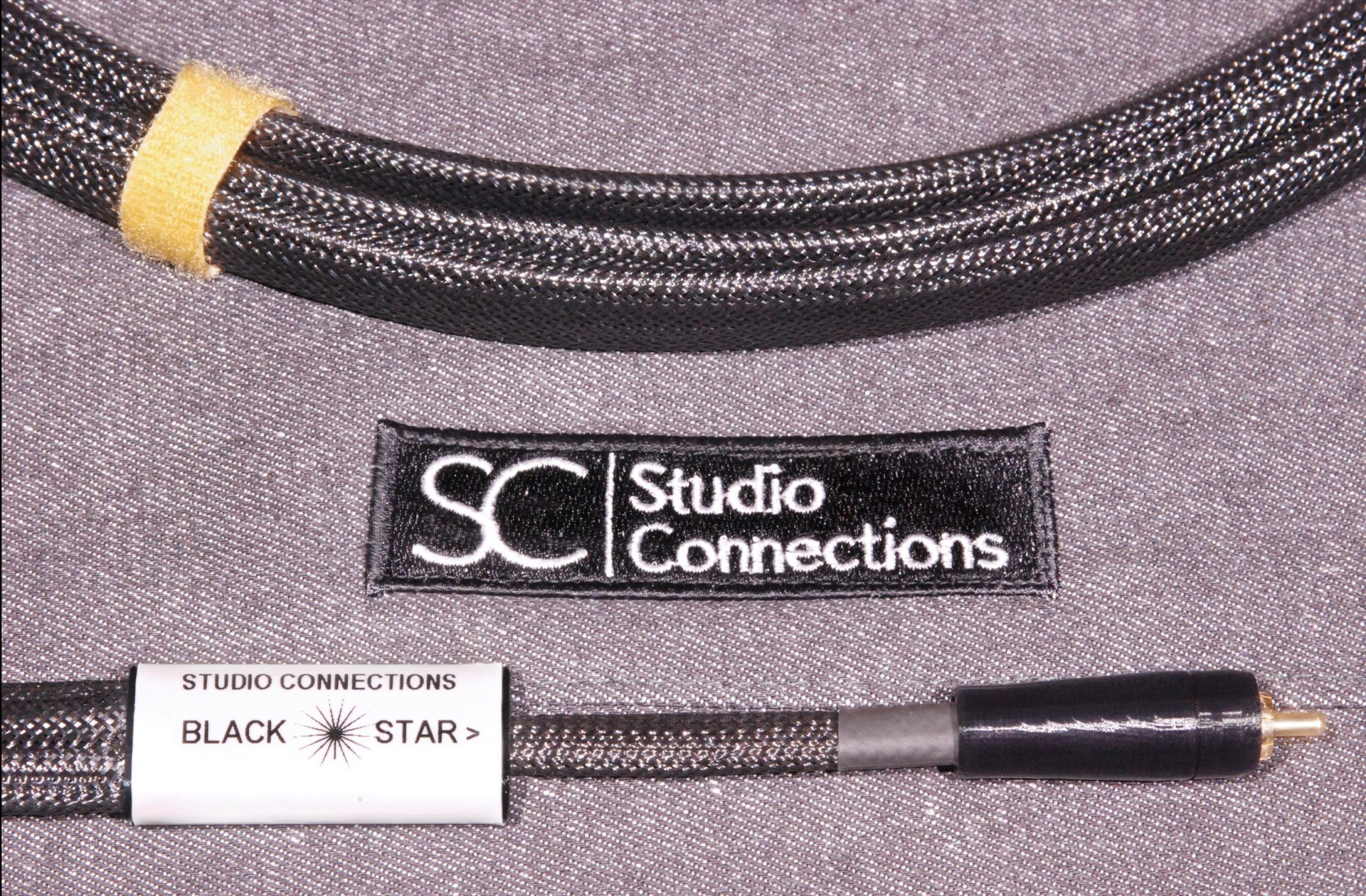



The quality of the IEC female termination to Studio Connections’ power cords is poor by any measure, let alone on expensive ones such as these. They just don’t grip the pins at all firmly and pull free very easily. As a first step, I’ve changed the IEC socket on the cord to my pre-amp for a fairly cheap alternative that’s much more robust and does its job much better.
In a strictly blind A/B comparison, I’m not sure I’d be able to discern any real difference between a Studio Connection power cord and one I made up myself using standard 20A Belden 3 core mains cable (the same as the stock power cords supplied with Krell amplifiers), a 250 ft drum of which cost me about ¬£150 (albeit many years ago now). Best to try before you buy and, before you install the Studio Connections power cord, unplug and reconnect your existing ones a few times first. That alone makes a difference and I do it every couple of months as a simple system maintenance routine.